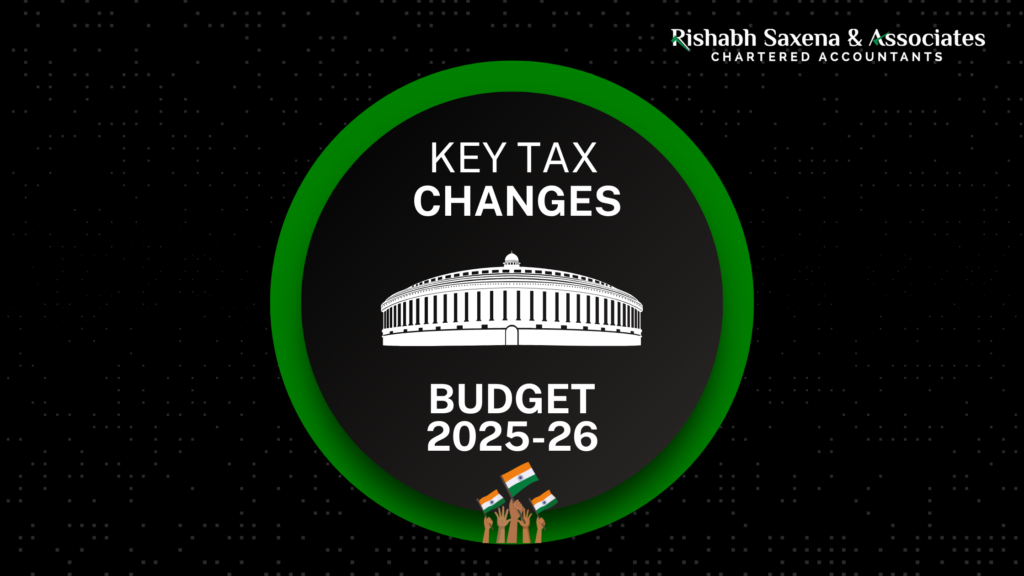New Income Tax Slabs 2025-26: No Tax on upto ₹12 Lakh

The government has announced new income tax slabs for the financial year 2025-26 (assessment year 2026-27). The biggest relief is that individuals with annual incomes up to ₹12 lakh will pay no tax, thanks to the increased rebate under the new tax regime.
Key Highlights of New Tax Regime 2025-26
- No income tax for income up to ₹12 lakh due to a rebate of ₹60,000.
- The new direct tax code is set to be presented in Parliament next week.
- Revised tax slab rates under the new regime.
Updated Income Tax Slabs for FY 2025-26
Below is a table summarizing the modified tax slabs and applicable tax rates:
| Income Range (₹) | Tax Rate |
|---|---|
| Up to ₹4,00,000 | NIL |
| ₹4,00,001 – ₹8,00,000 | 5% |
| ₹8,00,001 – ₹12,00,000 | 10% |
| ₹12,00,001 – ₹16,00,000 | 15% |
| ₹16,00,001 – ₹20,00,000 | 20% |
| ₹20,00,001 – ₹24,00,000 | 25% |
| Above ₹24,00,000 | 30% |
Major Benefits for Salaried Individuals and Senior Citizens
- Higher Rebate Limit: The rebate under the new regime has been raised to ₹60,000, effectively making income up to ₹12 lakh tax-free.
- Reduced Tax Burden: Middle-income taxpayers will benefit from lower tax rates, especially in the ₹8 lakh to ₹16 lakh range.
- Simplified Tax Structure: The revised slabs aim to make tax compliance easier by eliminating complex deductions.
Comparison with Previous Tax Slabs
For a clearer understanding, let’s compare the new tax regime with the previous year’s tax slabs:
| Income Range (₹) | Tax Rate (2024-25) | Tax Rate (2025-26) |
| Up to ₹3,00,000 | NIL | NIL |
| ₹3,00,001 – ₹6,00,000 | 5% | NIL |
| ₹6,00,001 – ₹9,00,000 | 10% | 5% |
| ₹9,00,001 – ₹12,00,000 | 15% | 10% |
| ₹12,00,001 – ₹15,00,000 | 20% | 15% |
| ₹15,00,001 – ₹20,00,000 | 25% | 20% |
| Above ₹20,00,000 | 30% | 25%-30% |
Impact of the New Tax Slabs
For Salaried Individuals
- Employees earning up to ₹12 lakh annually will pay zero tax.
- Those earning between ₹12 lakh and ₹16 lakh will see a reduced tax burden.
For Senior Citizens
- Retirees with income up to ₹12 lakh will be exempt from tax.
- The revised slabs ensure lower taxes for senior citizens with limited income sources.
Direct Tax Code – What to Expect?
The government is set to present a new Direct Tax Code in Parliament next week. Expected changes may include:
- Simplified tax filing procedures.
- Revised exemptions and deductions.
- More clarity on capital gains taxation.
Impact of Tax Changes in the Recent Budget
The recent budget introduced significant tax reforms aimed at boosting economic growth, increasing disposable income, and simplifying tax compliance. Key changes include an increase in the rebate under the new tax regime, making income up to ₹12 lakh tax-free, and revised income tax slabs that reduce the burden on middle-income earners.
Positive Impacts:
- Higher Disposable Income: With no tax on income up to ₹12 lakh, individuals have more money for savings and consumption, stimulating demand in the economy.
- Encouragement for Tax Compliance: Lower tax rates could incentivize more taxpayers to shift to the formal economy, reducing tax evasion.
- Boost to Investment & Business Growth: Tax reductions will lead to increase in disposable income resulting in a surge in consumption, creating overall demand across the sectors that will in turn encourage businesses to reinvest in expansion, creating jobs and driving economic growth.
- Relief for Senior Citizens & Salaried Individuals: The new slabs provide significant relief to pensioners and salaried taxpayers by reducing their overall tax liability.
Potential Challenges:
- Revenue Shortfall for the Government: Lower tax collection may impact public spending on infrastructure, healthcare, and welfare schemes.
- Inflationary Pressures: Increased consumer spending could lead to higher demand, possibly pushing up inflation.
- Sectoral Imbalance: While certain sectors benefit from tax cuts, others may not receive direct incentives, leading to uneven economic growth.
Final Thoughts
The updated tax slabs for 2025-26 bring substantial relief to taxpayers, especially salaried employees and senior citizens. With income up to ₹12 lakh becoming tax-free, more disposable income will be available, boosting savings and investments. Keep an eye on the upcoming Direct Tax Code announcement for further developments.








